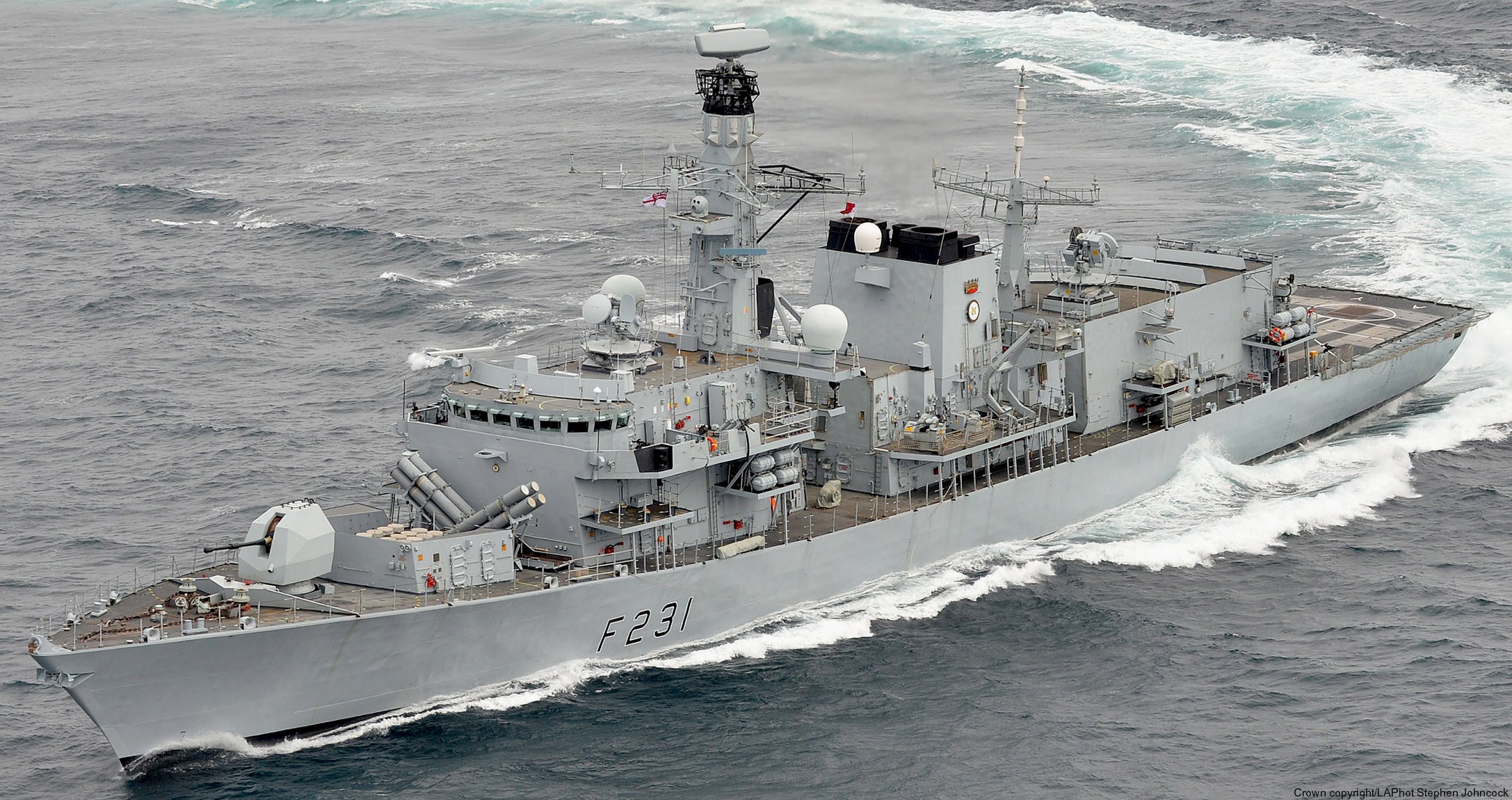
According to a recent article in ukdefencejournal.org.uk the future of two British Type 23 frigates, HMS Argyll and HMS Westminster, Which may represent an opportunity for our navy.
Lessons from Chile: How to build a highly capable navy with minimal money!
So though HMS Westminster She spent 90 days at sea in 2022 and entered into a planned two-year major overhaul to extend her service time until the end of the current decade, which was halted due to the ship’s condition. While this year, at the beginning of the year, there was speculation that Westminster might finally retire early, with the crew being transferred to a new Type 26 frigate.
Westminster is among the Type 23 frigates that have already received a lifetime upgrade, called the LIFEX -Life Extension (which ran for two years, from late 2014 to early 2017), receiving the new Artisan 997 radar and 32 CAMM anti-aircraft missiles. But the interesting thing for PN is that the ship also integrated the Pioneer 2087 sonar, which is essentially a British version of the sonar known to us, CAPTAS-4. So a boat with electric propulsion in 2087 is clearly the top “predator” of submarines.
Meanwhile, the other frigate arrived HMS Argyll, is the oldest Type 23 class in service with the British Navy (joining in 1991). The vessel also underwent its first LIFEX test in 2015-2017, and also features the new Artisan radar and CAMM missiles. While it returned to the Frigate Support Center tank in May 2022 to perform maintenance and extend its life as the second LIFEX stage. (Here let us note how the British Navy systematically repairs and “refurbishes” the condition of its ships, through these large maintenance programmes.)
HMS Argyll’s new LIFEX was expected to be completed in the summer of 2023, but work appears to have been put on hold here too. Relevant reports in early 2024 indicate that despite the good condition of the ship and Babcock’s guarantee of the successful completion of the project, the frigate may not return to service. Mainly due to staff shortages!
This is one of the main issues for the British Navy in recent times, which on the one hand is “running” two parallel programs to build new frigates, the Type 26 and Type 31, but on the other hand is facing serious staffing problems. It is therefore not unlikely that the two Type 23 frigates we mentioned, with modernization already completed, and in the midst of a major new maintenance programme, are To be available for publication, even immediately. Of course the new owner will have to pay the costs of completing the current maintenance on both ships, but something This ensures that boats are received in very good condition and fully inspected. So they will not “hide” breakdowns or serious damage and will still have years of service.

Knowing the prices at which the British sell their used ships, we can say that the ships, without Sea Ceptor Missiles (CAMM), can be sold very cheaply, around 100 million euros each.
Somewhere here we should say that CAMM-ERs with increased scope could be placed in the future instead of CAMMs. The ships are even capable of displacement, 5,000 tons, and plenty of electrical power and space, even to mount a RAM launcher at the stern.
We must be clear that not everything is rosy with the Type 23. The biggest problem – apart from age – is the battle management system they have, which was designed specifically for the British Navy by BAE Systems. It is called the Surface Ship Command System (SSCS) and is based on the Ada architecture, using Intel 80486 processors, however, the SSCS has been upgraded to accept the Sonar 2087 countermeasures system and Outfit DLH. But we can in no way say that it has anything to do with TACTICOS, which is the standard PN battle management system.
However, BAe Systems has excellent knowledge of TACTICOS, having integrated it into PN’s Roussillon missiles. This would mean that a solution could be found should we be interested in the Type 23. If we actually embarked on upgrading the Rusyn missiles (another need of ours), and also incorporating there a program to adapt TACTICOS to British frigates (as long as that was possible and economically affordable).

There is another problem with the organic anti-submarine warfare helicopter. The British Navy uses the Lynx, now the 7-ton Wildcat, in this role, while the Navy uses the more capable S-70B/B6 and in the future the MH-60R, a 10-ton class. However, the ship’s helipad can comfortably accommodate MH-60R aircraft, as it has also accommodated 15-ton Merlin (AW101) helicopters. What we don’t know is whether the hangar can accommodate MH-60R/S-70B aircraft, with or without conversions.
Many will argue that it’s not worth making any “fuss” for just two ships. We must not forget that by the end of the current decade, the British Navy will retire all Type 23s, which are expected to be in great demand by many navies around the world as valuable used ships. Even Türkiye has expressed interest in this matter.
ThinkOutOfTheBox: Instead of Corvettes, buy 6 British Type 23s and upgrade with 4 MEKO200HN
HMS Argyll and Westminster, in particular, have been in Ukraine’s crosshairs for a long time because they are frontline ships that have undergone a LIFEX modernization. With the Dutch M in poor condition, we cannot rule out seeing Chile interested in the ships again. After all, the Chilean Navy already has three Type 23s in service, and has retrofitted them with CAMM missiles and Hensoldt TRS-4D radars.
The British Type 23 stock would therefore have served as a PN-capable ‘temporary solution’. The usual objection.
Continue in Naval defence

“Hipster-friendly coffee fanatic. Subtly charming bacon advocate. Friend of animals everywhere.”





More Stories
F-16 crashes in Ukraine – pilot dies due to his own error
Namibia plans to kill more than 700 wild animals to feed starving population
Endurance test for EU-Turkey relations and Ankara with Greece and Cyprus